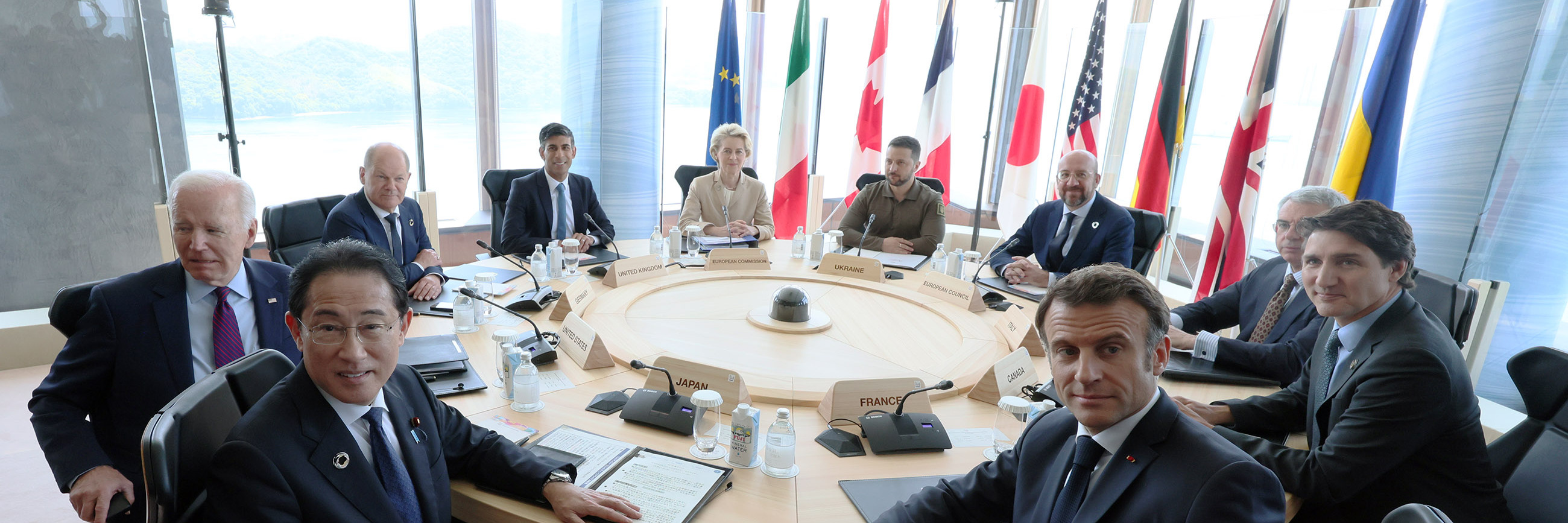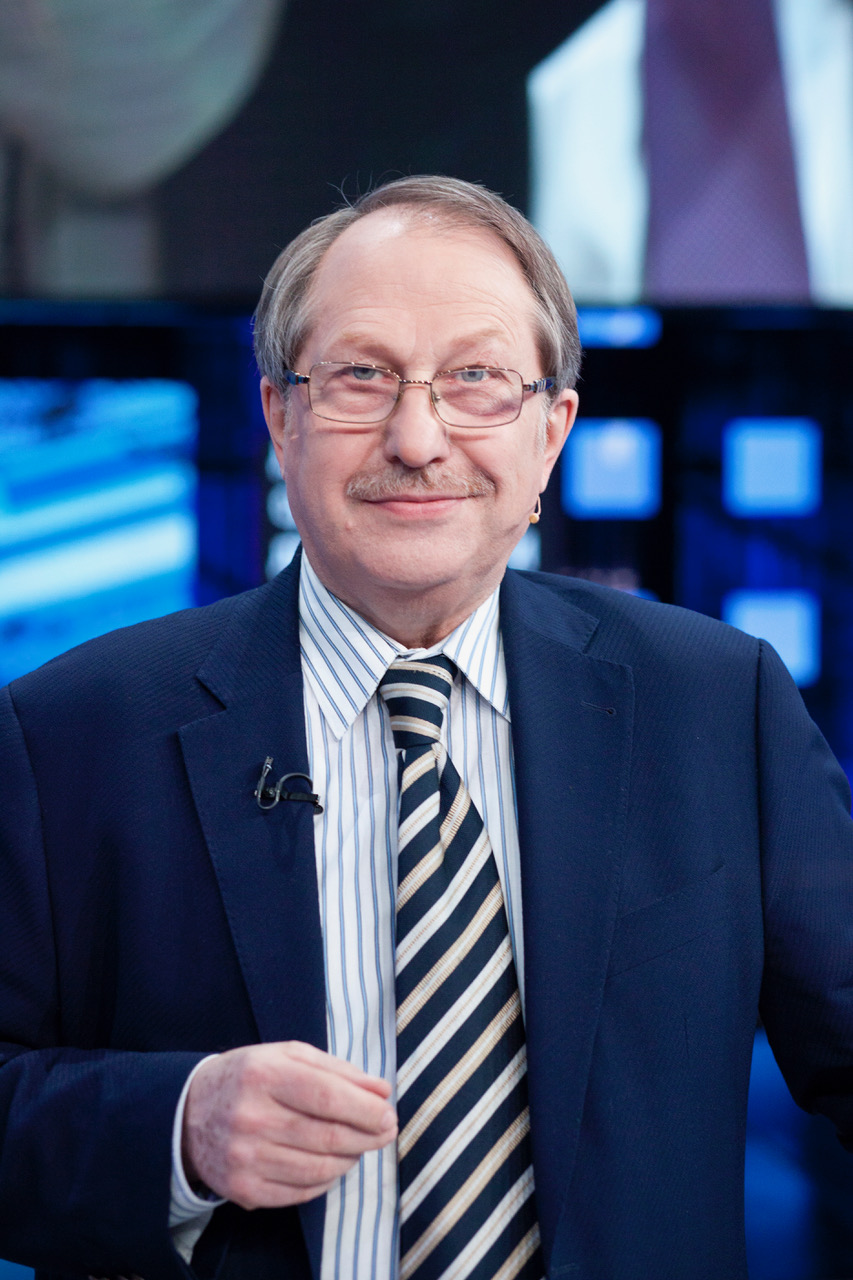Defense & Security
The Hiroshima Summit exacerbates the East-West confrontation

Image Source : Wikimedia Commons
Subscribe to our weekly newsletters for free
If you want to subscribe to World & New World Newsletter, please enter
your e-mail
Defense & Security

Image Source : Wikimedia Commons
First Published in: May.23,2023
Jun.02, 2023
The meeting of the G7 in Hiroshima has become a new symbol of the combat coordination of the Western and Eastern fronts of the global cold war. These two fronts are designed to pincer Russia and China, to prevent them from continuing to create a world order that rejects the "rules" invented in Washington.
On the Western Front, stretching from Finland to Turkey, a continuous chain of military bases has already been created and an open military conflict has been provoked in Ukraine. NATO, which has been preparing for a clash with our country for several decades, has played a key role in coordinating the countries and armed forces of the West against Russia.
On the Eastern Front of the Cold War, the same scenario is repeated, but with a time lag of several years. After the failure of hopes for the “constructive involvement” of the Celestial Empire, an open confrontation with it began to unfold in 2018, when a trade, a “color revolution” in Hong Kong and a massive pumping of weapons in Taiwan began. By that time, the US had military agreements with Japan, South Korea, Australia and the Philippines, but there was no coordinating organization like NATO. Therefore, Washington began to demand that the bloc's "zone of responsibility" be extended to the Indo-Pacific region. In the meantime, the military bloc AUKUS (Australia, Great Britain and the US) was urgently created and the military-diplomatic organization QUAD (Australia, India, the US and Japan) was activated. The successes achieved and the next tasks in building up the front of the anti-Chinese forces of America, Europe and Asia should have been the topic of discussion at the Hiroshima summit. AUKUS and QUAD, in turn, were going to demonstrate a new level of coordination during Biden's trip to Australia to meet with the leaders of the member countries of the two organizations. But something went wrong, and the US President did not fly to Canberra. Among the explanations, the most plausible seems to be Indian leader Modi's unwillingness to draw his country even deeper into Western bloc structures.
The triumphal march was not performed upon returning to Washington, not only because of this discrepancy. With regard to “decoupling” with China, different approaches appeared in the ranks of the G7, which were reflected in the final communiqué. A real "divorce" with its largest trading partner does not suit the European members of the G7. The desire to “sit on two chairs” and maintain profitable ties with Beijing without violating the requirements of Euro-Atlantic discipline at the same time is obvious. This is a line of high-ranking visitors seeking a meeting with Xi Jinping, and the words of the communique, designed to be understood by Beijing leaders: “Our political campaigns are not designed to harm China or slow down its economic progress and development.” The communiqué also notes that the G7 does not engage in "divorce" and does not "lock inward."
Washington's desire to strengthen the Eastern Front was not crowned with complete success also thanks to Beijing's own "counteroffensive" on the Western Front. The new "counteroffensive" was the mission of China's special envoy, Ambassador Li Hui. He should clarify the official position of the parties to the Ukrainian conflict and talk about different scenarios. Beijing emphasizes that Li Hui should collect information, and not offer ready-made solutions. Therefore, in addition to Kyiv, he will visit Warsaw, Paris, Berlin, Brussels and complete this first trip in Moscow. Prior to Li Hui's tour, China's Vice President Han Zheng, party foreign policy curator Wang Yi, and Foreign Minister Qin Gang visited Europe a few weeks before Li Hui's tour. Even Xi Jinping got involved, talking to Zelenskiy on the phone.
Beijing launched this "counteroffensive" in response to the "offensive" of NATO. The bloc's area of responsibility has already been officially extended to the Indo-Pacific region, and a regional headquarters is to be opened in Tokyo. The Chinese may well draw a parallel of the ongoing events with the accession of Japan in 1936 to the Anti-Comintern Pact. A year later, the emboldened Japanese began an all-out war against the Celestial Empire, capturing Beijing, Shanghai, Wuhan and Nanjing in a few months. Only the diplomatic, military and financial assistance of the Soviet Union prevented the capitulation of the Republic of China along the lines of France. China, in turn, prevented Tokyo from attacking the USSR at the already appointed time - August 29, 1941. The Imperial Headquarters did not dare to fight until the end of the "Chinese incident" simultaneously with China and the Soviet Union. Then, for the first time, two interconnected and mutually beneficial strategic fronts emerged.
Now the situation of "two fronts" is repeated. Russia's military successes coincided with the G-7 summit in Hiroshima. The Western Front again supported the Eastern. Now the Pentagon will once again analyze the plans for operations around Taiwan. The "combat coordination" of Russia and China began to pick up increased pace after the visit to Moscow of President Xi Jinping. The agreements of the two commanders-in-chief are now being implemented by other leaders. Chinese Defense Minister Li Shangfu and Party curator of China's special services, secretary of the Political and Legal Commission of the Central Committee of the CCP Chen Wenqing visited Moscow. In turn, Prime Minister of Russia Mikhail Mishustin and several hundred heads of ministries and departments, leading entrepreneurs went to Beijing. Although it is unlikely that all of them will be able to achieve a breakthrough on their tracks in a couple of days in the Middle Kingdom, even a short stay in Beijing and Shanghai will help you see the “Chinese miracle” with your own eyes and be convinced in detail of the importance of interaction. After all, the “turn to the East” should take place in the minds of our politically shaping elite, which has not yet got rid of the illusions about the possibility of returning the “good old days” with the West. The China-Central Asia summit, which took place on May 18-19, 2023 in the ancient capital of the Silk Road, the city of Xi'an (Chang'an), can also be considered part of the Chinese "counteroffensive" in response to the "containment" by the collective West.
Ahead of us are new summits of NATO and the Group of Seven, new meetings of the leaders of the SCO and BRICS. All of them fit into the logic of the formation of a new global architectonics. A key role in preventing the concentration of Western forces against one or the other of the main competitors - Russia and China - is played by the "combat coordination" of the two countries. It meets the national interests of both nations and therefore will only grow.
First published in :

Tavrovsky graduated from Leningrad State University, Chinese Language Department of the Oriental Faculty. At the University he was translating and writing commentaries to Chinese Classics. Upon the graduation in 1971 Tavrovsky started to work for Chinese Department of Radio Moscow International. 7 years later he joined the New Times weekly, the major Soviet publication on foreign affairs writing about China, Japan, Vietnam, and other Asian countries. In 1987 Tavrovsky was sent back to Moscow to work in the International Information Section, Ideology Department of the CPSU Central Committee. He was responsible for Soviet propaganda to China, Japan, Korea, and the rest of Asia-Pacific. He took part in preparations for Secretary-General Mikhail Gorbachev visit to China in 1989 and accompanied him in Beijing. After collapse of CPSU and USSR in 1991 Tavrovsky worked as foreign policy analyst in Izvestiya daily, Editor-in-chief of the Vestnik magazine, head of Information features department in the Russian State TV Company. For 10 years he was Editor-in-chief of the Diplomat published by the Russian Foreign Ministry. Upon retirement was lecturing at the Russian Friendship University and Moscow Foreign Languages University as a visiting professor. Since 2019 Yury Tavrovsky heads the Experts Council of the Russo-Chinese Committee for Friendship, Peace, and Development.
Unlock articles by signing up or logging in.
Become a member for unrestricted reading!